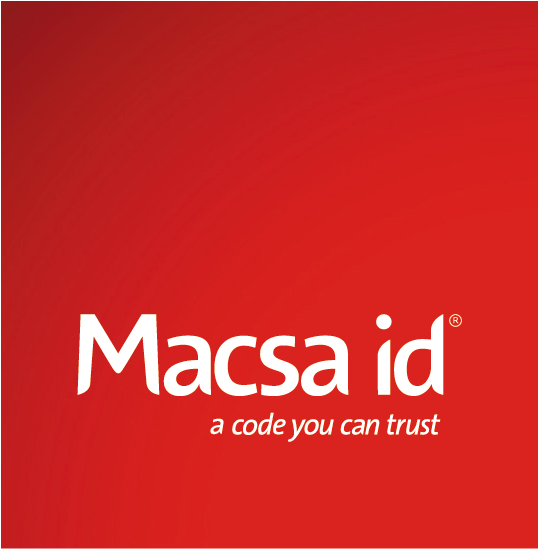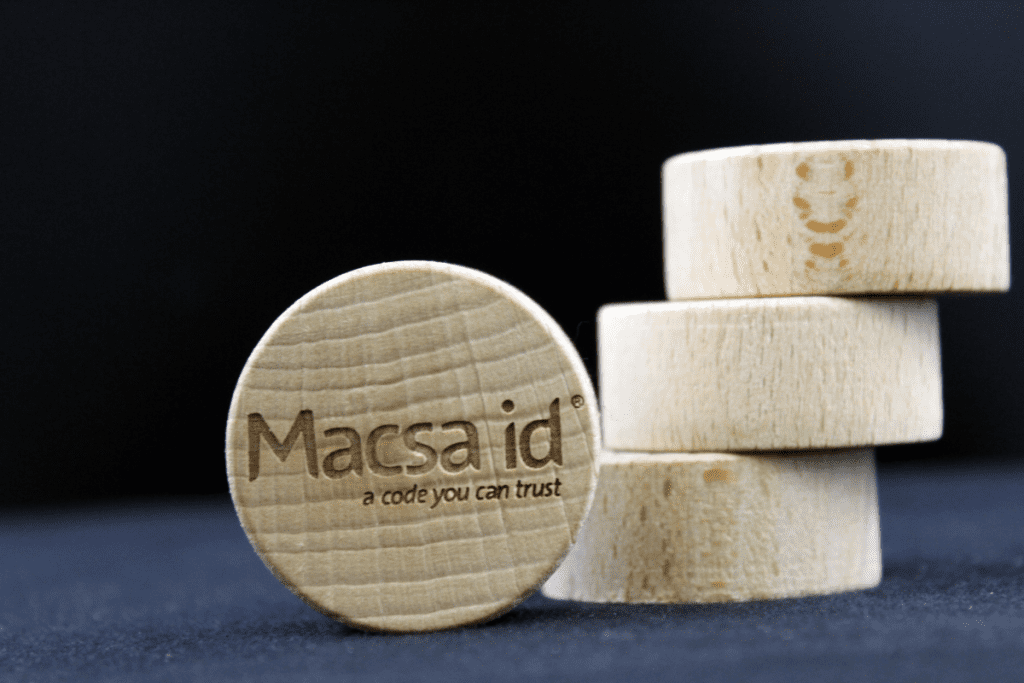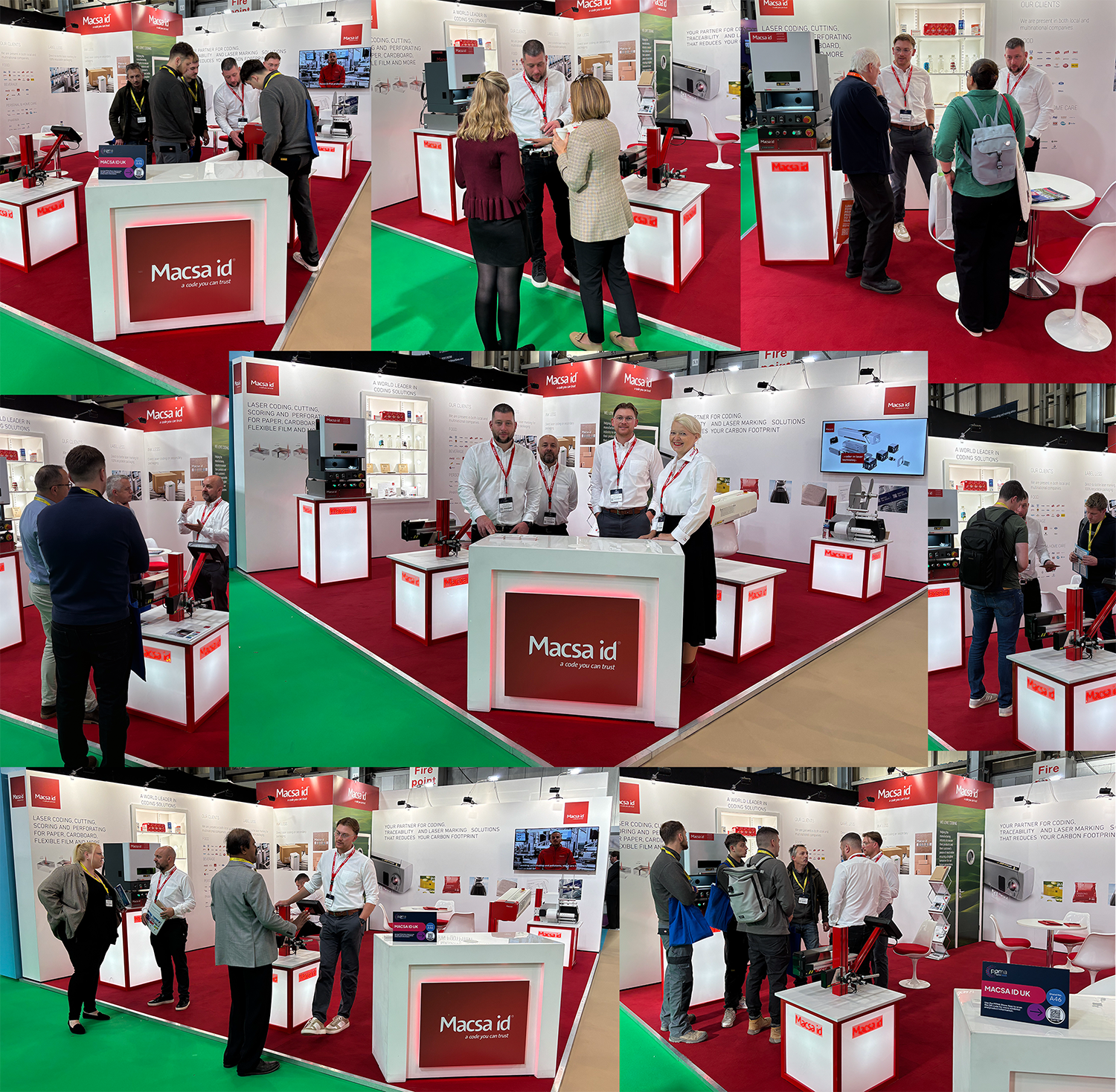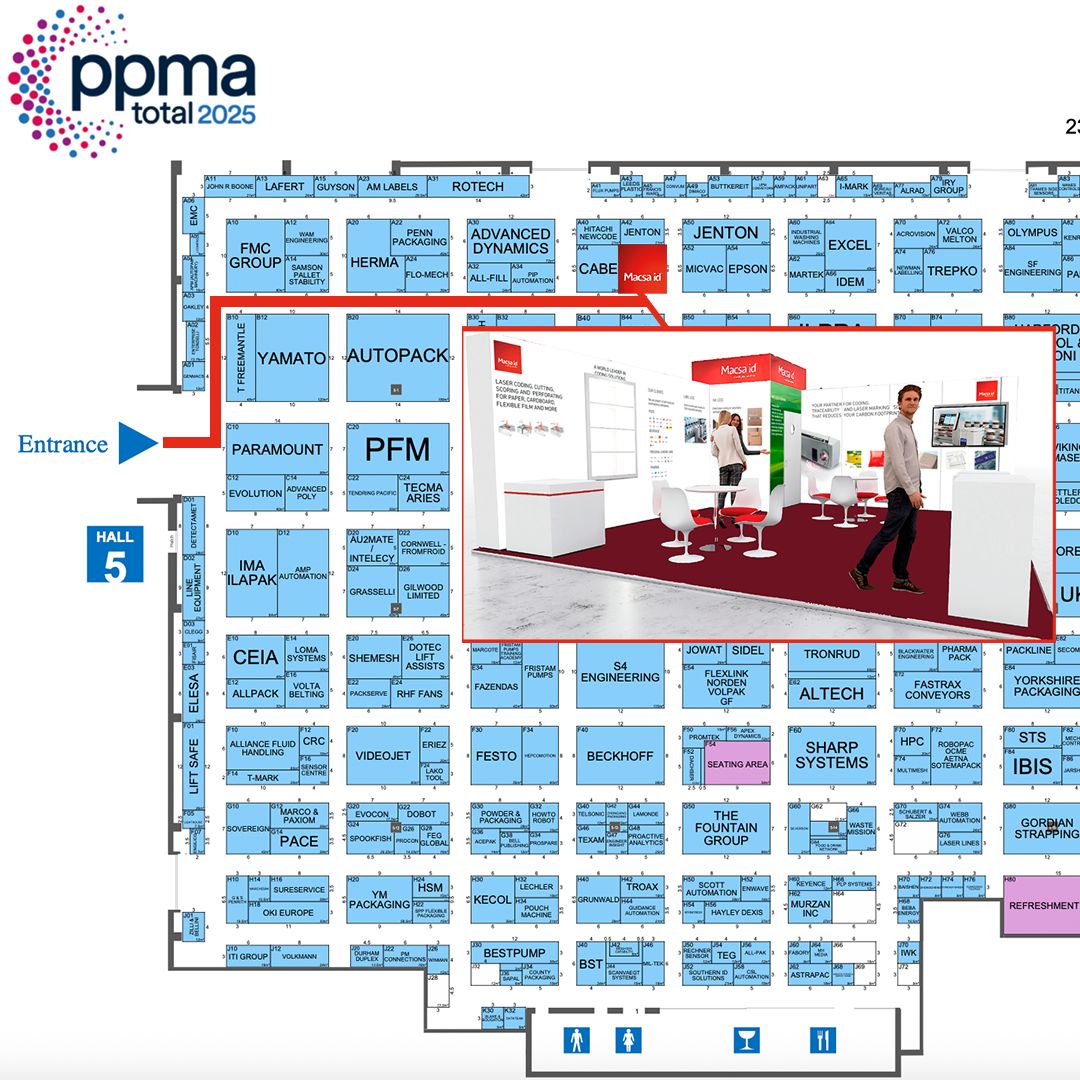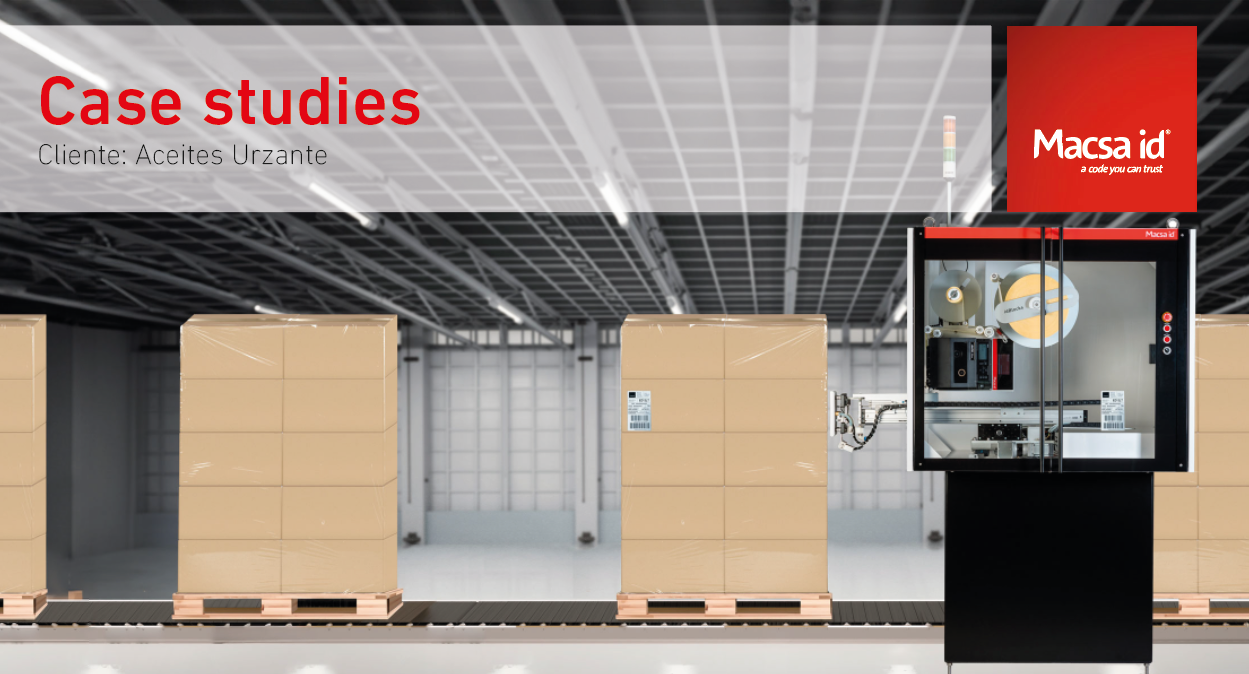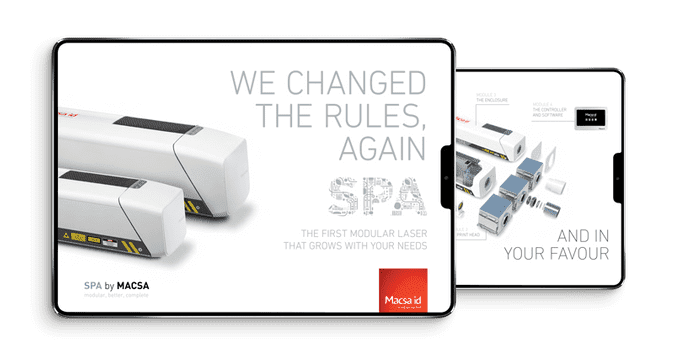
Laser marking for biodegradable packaging
Sustainability is a key issue for modern consumers, who demand greater environmental commitment from companies and their brands. These more demanding consumers are putting pressure on companies to share their concerns and aspirations and are willing to pay more for products in line with them.
This is why the use of sustainable materials is becoming increasingly common in the packaging industry, for example biodegradable packaging, which causes the lowest environmental impact.
Table of contents
- An initial definition
- Production of biodegradable materials
- Biodegradable materials
- Laser marking on biodegradable materials
- Macsa ID solutions
- A first success story: laser marking on biodegradable food capsules
- A second success story: laser marking on paper and cardboard
- Inkless; the most advanced laser for marking on secondary bases
- Traceability management
An initial definition.
Biodegradable packaging is starting to become a clear alternative to traditional plastic packaging.
In some sectors, for example hospitality, it is estimated that the industry will experience a growth of 14.4% worldwide by 2025. This growth is equivalent to more than $30 billion (“Biodegradable packaging: market analysis, trends and forecasts”, Research and Markets, 2019).
Another fact that supports this progressive implementation is that the bioplastic production industry (European Bioplastics), has published a report stating that it will reach levels of 2.8 million tonnes produced in 2025. According to this report, biodegradable plastics account for almost 60% of the worldwide bioplastic production capacity.

Laser marking on biodegradable PVA
Do you want more information about laser marking for biodegradable packaging?
Production of biodegradable materials
Essentially, they are produced using biopolymers, molecules that can generally be found in living organisms, such as proteins or cellulose.
These biopolymers are used to produce a wide variety of biodegradable packaging for organic materials, such as food containers, films for wrapping perishable products, coating for fruits and vegetables, bags for storing food and cosmetics containers, etc.
Once used, these biodegradable containers quickly decompose due to the effect of microorganisms such as fungi or bacteria and are transformed into water, nutrients, CO2 and biomass. In fact, a material is qualified as biodegradable only if it is capable of decomposing in the natural environment without leaving any toxic residue.
Among the main advantages of biodegradable packaging, the following can be highlighted:
- They are non-toxic to humans
- They do not pollute natural environments
- They help in the preservation of the environment
- They are easy to dispose of and rapidly degrade
- They contribute to the making the life cycle longer
- They are produced from renewable raw materials
- They consume less energy in their manufacture
- They decrease CO2 emissions and reduce carbon footprints
Biodegradable materials
Given the need for new biodegradable packaging solutions, some materials are better positioned than others to meet this new demand:
- Paper and cardboard, which are more than 80% biodegradable
- Bioplastics or vegetable plastics, which are a 100% biodegradable material. Their development is the result of the need to find an alternative material to plastic, but with similar characteristics and from non-polluting sources.
- Film, a 100% biodegradable material, especially used in the food industry.
Laser marking for biodegradable packaging
The sector’s orientation towards greener packaging has found an important ally in laser technology when marking biodegradable materials. This is because it does not alter or modify levels of biodegradability after marking.
In the same way, laser technology offers optimum performance in the marking of biodegradable material derived from plastics, cardboard, wood, cork, etc. It can be adapted to the necessary power in order to customize products and guarantee traceability.
Lasers are a fast and environmentally friendly technology that neither require consumables such as ink or solvents nor generate fumes or toxic chemical emissions. This high-precision equipment ensures maximum control of both the marking characteristics and the properties obtained in the final product. It guarantees hygiene and biological compatibility when marking, since the marked item has not been subjected to any type of mechanical stress. In addition, by eliminating consumables, we also eliminate their containers and the need for further waste management.
Macsa ID solutions
To meet the new needs in biodegradable packaging, Macsa ID has the most complete catalog of laser marking products on the market, which allows us to offer a variety of laser technology and properties in order to obtain the best solution for our customers. As such, we have C02, Fiber or DPSS lasers. These are available in all varieties of wavelengths, different pulse widths (starting from the picosecond), variability in laser application spot size, and a high range of available powers to mark under different conditions and time constraints.
With this wide range of technology, Macsa ID offers high definition solutions to meet the strict requirements of this industry, through different laser marking processes, for all materials and regardless of the message that needs to be marked (barcodes, Data Matrix, serial numbers, logos, and so on).
So as to ensure the effectiveness in the marking and traceability of the different biodegradable materials, Macsa ID provides solutions for verification, quality control and monitoring of the markings made, through OCR recognition systems (each marked character is checked to ensure that it corresponds to the expected one) and validation of 1-D and 2-D codes.
A first success story: laser marking on biodegradable food capsules
The packaging industry is constantly innovating to advance biodegradable products with a minimum impact on the environment, while trying develop to new, functional and attractive solutions for consumers.
One of these innovative applications, where our company’s most advanced marking technology has been applied, are biodegradable single-dose capsules. Manufactured with a plastic substance, they allow vacuum encapsulation of different products to maintain all their characteristics while offering the final consumer a better experience. Laser marking on biodegradable capsules is carried out with an SPA CB series CO2 laser (with a wavelength of 10.6 μm) that leaves a high-contrast whitish mark without damaging the packaging and without the danger of breaking or altering the product characteristics.
The ablity to personalize each capsule with varying and complex information (such as logos, nutritional information, etc.) implies a high rate of laser marking, so a UHS (Ultra High Speed) head is used, which provides extreme marking speeds without losing definition in the final result.
A second success story: laser marking on paper and cardboard
Macsa ID has the widest range of CO2 lasers for cardboard and paper, offering different solutions depending on the requirements of the application.
Cardboard and paper are organic materials largely composed of cellulose. These molecules have a high absorption rate of infrared radiation emitted by CO2 laser equipment. The most suitable equipment for handling these materials are those corresponding to the Macsa ID SPA C series with wavelengths in the order of tens of microns.
In this sense, given the characteristics of infrared radiation absorption, lasers are a widely used tool in the cardboard and paper life cycle, from the manufacturing process to the final finishing.
In the manufacturing process, cutting applications are the most demanded. These applications require a high energy density that gives a clean cut, so equipment with HPD heads (High Power Density) are used, which offer a combination of laser beam diameter and mirror size, optimal for cutting in large application areas.
For the packaging industry, a wide variety of jobs involving the cutting of complicated geometric patterns can be performed precisely and quickly. For these jobs, both HPD and CO2 equipment with short focal length lenses are used, which concentrate a high energy density in very specific areas.
DO YOU WANT TO SEE MORE INFORMATION?
A similar application to cutting is perforation. In this case, these applications are aimed at providing functionality to cardboard or paper, either as a ventilation system, for easy-opening, or assembly aids. It can also be applied to ‘ecological’ plastics to reduce air and water vapor from vegetable packaging, providing better visual quality and product durability.
Nonetheless, the most important current application is laser marking and coding. For this type of application, Macsa ID’s SPA C series is the most suitable solution, regardless of the composition and color of the substrate that will be handled.
It must be taken into account that there are several types of cardboard: direct cardboard, mainly used in logistics and courier applications, painted cardboard and cardboard with additives. If direct cardboard needs to be marked, in any of its forms, we generally use SPA CB equipment, with wavelengths of 10.6 μm, which allows us to encode at high speeds and generate a brown contrast. If what we have are painted materials, the best option is the SPA CP equipment, with a wavelength of 9.3 μm, which allows us to be more effective in only marking the paint surface and not damaging the surface underneath the cardboard, as well as generating a higher contrast.
Inkless; the most advanced laser for marking on secondary bases
In the current industrial and commercial arena, where the importance of secondary packaging has grown exponentially and is one of the most widely used applications in the world, a solution that allows coding this type of packaging in a clean and efficient way is the key to providing the industry with an environmentally friendly marking system that avoids productivity losses in the manufacturing processes.
To obtain maximum contrast when marking directly onto cardboard and paper, without using inks or polluting additives, Macsa ID has developed and patented a new laser marking system: Inkless.
This new proposal from Macsa ID is based on the combination of laser processes using infrared and ultraviolet radiation that produces maximum contrast marking, without generating waste and while respecting the environment.
Inkless technology opens the door to the personalization of secondary packaging containers at the last stage of production, avoiding material mixing, eliminating the need for labels and saving resources (paper, label adhesive, ink, inner roll on which the labels are wound…).

In addition to providing direct and permanent marking on cardboard, Inkless has many other advantages:
- It supports an uninterrupted process, improving the efficiency of industrial processes, maximizing productivity and uptime of production lines.
- It uses clean, safe and environmentally friendly laser technology.
Traceability management
The technological solutions provided by Macsa ID lasers make it possible to mark and code both biodegradable packaging and the products themselves, recording all associated information, such as manufacturers, suppliers, distributors, etc.
Knowing the origin and the path a product has taken until it reaches the consumer is synonymous with the guarantee, quality and transparency provided by an industrial traceability system, which brings great benefits:
- Optimization in the supply chain, with more efficient logistics management.
- Increased productivity, given it is possible to know yields for machines, times for phases, stages and products.
- Savings in production costs.
- Product quality assurance.
- Management of complaints and product recalls, the location of possible defective items can be traced.
- Avoids counterfeiting.
- Maximum information and transparency.
- More guarantees for the consumer, as a unique code can be given to each individual unit.
Macsa id will be happy to find the marking, coding and traceability solution for your needs
